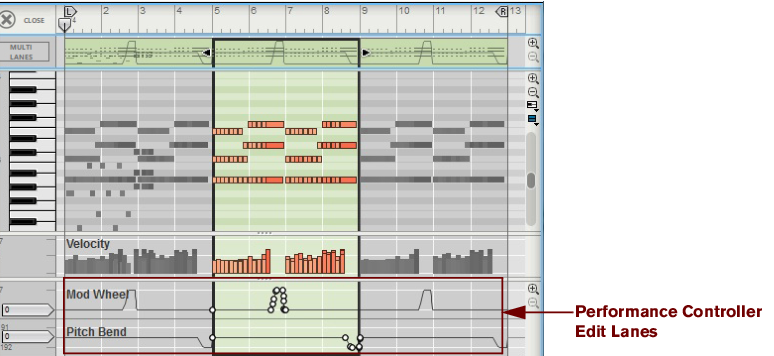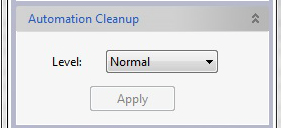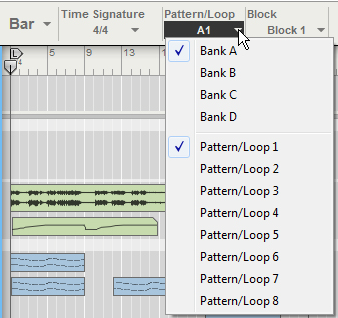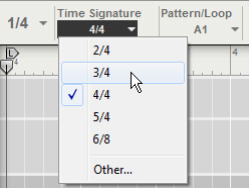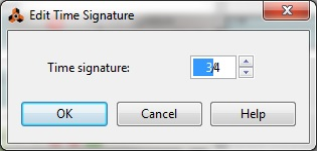|
•
|
|
•
|
|
|
Here you can edit the parameter’s Static Value (see “Static Value Handles”) with the up/down arrow buttons to the left of the open clip. Alternatively, double-click and type in a new Static Value in the box.
In the open parameter automation clip, it’s possible to move, add and delete automation events in the same way as in Edit Mode using the Selection (Arrow), Pencil and Eraser tools - see “Editing parameter automation in Edit Mode”.
The event’s position and value can be edited numerically in the displays - see “Note and automation editing in the Inspector”.
|
|
When moving automation events with the Selection (Arrow) Tool, Snap (see “Snap”) is taken into account if enabled. You can also resize the clip by dragging the clip handles.
|
|
These values can be edited numerically in the Inspector displays. See “Note and automation editing in the Inspector”.
If you move parameter automation events outside the boundaries of an open clip, the same rules apply as when moving note events outside an open clip. See “About moving notes outside or between clips”.
When dragging, the resulting curve (i.e. the number of points) depends on two factors; the selected “Automation Cleanup” setting in the Preferences menu (see “About Automation Cleanup”), and the snap value if Snap is activated (see “Snap”).
If you draw parameter automation events outside the boundaries of an open clip, the same rules apply as when drawing note events outside an open clip. See “About drawing notes outside an open clip”.
|
|
It’s possible to reverse the order of selected automation events in an open note or automation clip, see “Reverse”.
|
|
|
4.
|
Afterwards, you can edit the performance controller events the same way as with regular parameter automation events (see “Editing parameter automation in Edit Mode”).
This automatically removes superfluous automation events next time you record or draw events and simplifies the curves. Note that Snap (see “Snap”) also governs the number of events when drawing events.
|
1.
|
However, it is recommended that Snap is activated (and in most cases set to “Bar”) when you do this (see “Snap”).
Tempo automation is edited in the same way as regular parameter automation. See “Editing parameter automation”.
Drawing tempo automation events is done in the same way as drawing regular parameter automation events. See “Drawing parameter automation events”.
|
|
|
|
It is generally a good idea to activate Snap (see “Snap”) and have the Snap value set to “Bar” when drawing clips.
|
The available signatures are: 1/2-16/2, 1/4-16/4, 1/8-16/8 and 1/16-16/16. The Time Signature display in the dialog can be edited according to the descriptions in “Transport Panel segment displays”.
|
5.
|
There is no need to switch to Edit Mode unless you wish to change the time signature’s Static Value.
However, it is recommended that Snap is activated (and in most cases set to “Bar”) when you do this.









